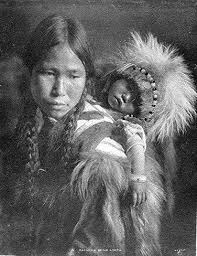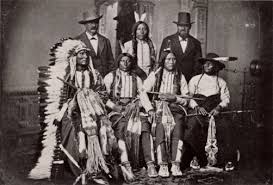The word “Alaska” came from the word “Alaxsxix” or “Alakshak”, an Aleutian word which means peninsula or great lands. The native people who inhabited western Alaska and Aleutian islands were called the Aleuts. They were closely related culturally and physically to the Eskimos. The native people of Alaska were called the Alaska Natives.
The Alaska Natives History
Alaska is a U.S. state located in the northwest part of North America. There were many known Native American Indian tribes who took part in the history of Alaska and whose homelands and territories are situated in the current state Alaska. Some of the famous Alaska Tribes were the Chinook, Eyak, Tillamook, Tlingit and the Salish. The native Alaskans were divided into groups. The Haida an, Tsimshian or the coastal Indians, and the Tlingit consisted of several tribes and were also known as the First Nations. The Aleut settled in the Aleutian islands near mainland Alaska. The indigenous Athabascan Indians lived in the center of the state. The two groups of Eskimos were the Inupiat or the Northern Eskimos and the Yupik or the Southern Eskimos.

The history and lifestyle of Alaska people were affected by the natural basic materials accessible in Alaska. The materials and the natural resources supplied food, clothing, and shelter for the native Indians.
Native Alaskan Culture
The tribes of Tlingit, Tsimshian and Haida thrived in the southeast part of Alaska. The region was known for its lush forests, abundant fish, mild climate, games, and edible plants. Their culture was highly developed producing exquisite blankets, totem poles, and ceremonial costumes. The Tlingit people were also known as fierce warriors. They drove the first Russians who tried to inhabit in Sitka despite the cannons and guns possessed by the invaders.

The Athabascan Indians of central Alaska and Canada encountered a tougher way of living and often suffered famine than the other tribes. Close kin to the Apaches and Navajos, the Athabascans were skilled hunters. They were able to gather berries, roots, and other edible plants, follow herds of moose and caribou on long distances, and fish for river fish and salmons. Their beaded garments were highly valued by the other tribes and were often exchanged with furs and other important items by the Tlingit, Inupiaq, and Yupik. They were divided into several tribes each with distinct dialects.
The Inupiaq lived beside the north coast of Canada and Alaska. The Inupiaq and Yupik people fished, hunted, and gathered food for survival. They gathered roots and berries and hunted for caribou, as well as seals, walrus, and polar bears. The Aleuts were the smallest tribe among the Alaska natives. Their survival depended on the rich sea that encircled Aleutian Island which is their homeland. Their food, clothes, homes, tools and even heat came from the creatures that lived in the sea or along the seashore. They are known as skillful mariners who used their baidarkas (kayaks) in trading, hunting, traveling and even raiding enemy villages. Some of the animals that were useful to the Aleuts were the whales, fish, ducks, and otters.
Alaska Native tribes and tribal organizations, Alaskan Indian tribes map, Alaska native history, Alaska native wildlife, Alaskan native names, iñupiat Alaskan
